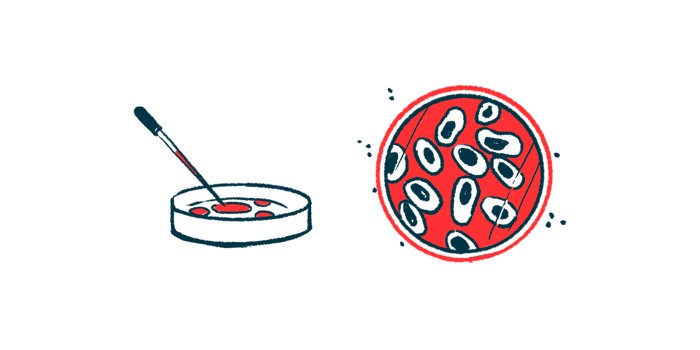Alpha-Lipoic Acid May Improve Glucose Metabolism in AIP Patients

Alpha-lipoic acid, an insulin sensitizer, may help improve the breakdown and use of glucose, or blood sugar, in the liver of patients with acute intermittent porphyria (AIP), according to a recent cell-based study.
The findings showed that alpha-lipoic acid is “attractive for the management of metabolic disorders, as it did not induce significant side effects,” according to researchers.
“We proposed, for the first time, its use for the prevention of AIP crisis,” the team wrote, although noting the therapy’s “efficacy and safety in AIP patients might be confirmed in clinical trials.”
The study, “α-Lipoic Acid Improves Hepatic Metabolic Dysfunctions in Acute Intermittent Porphyria: A Proof-of-Concept Study,” was published in the journal Diagnostics.
AIP is a metabolic disease in which the lack of activity of porphobilinogen deaminase (PBGD) — one of the enzymes involved in the production of heme — results in the accumulation of porphyrin precursors in the body. Of note, heme is a molecule that is needed for oxygen transport in living cells, while porphyrins are heme precursor molecules.
Acute attack symptoms can be triggered by fasting, changes in glucose metabolism, and insulin resistance — all of which suggest that a link may exist between nutrient metabolism (or breakdown) and heme production.
Studies have indeed shown that heme depletion, like that seen in patients with AIP, may affect glucose metabolism. In this study, researchers in Italy sought to shed light on this connection.
The team used human liver cells, in which they reduced the expression, or activity, of the PBGD gene by using a specific silencing RNA — a common molecular biology technique used to decrease or completely turn off gene activity.
PBGD gene expression was reduced by about 60% and enzymatic activity by 42%, thus mimicking the reduced activity seen in patients with AIP.
The researchers then investigated whether alpha-lipoic acid could be used as a prophylactic treatment to help prevent acute AIP attacks. To do so, they exposed PBGD-silenced cells (siPBGD cells) to either glucose or alpha-lipoic acid for 24 hours before exposing them to a low-glucose environment, which mimicked fasting.
Both PBGD gene expression and enzymatic activity were then measured in fasted cells. The results showed that alpha-lipoic acid was able to prevent the effects of PBGD silencing on both ends better than glucose. At the same time, alpha-lipoic acid also increased the availability of heme within the cells.
Additionally, the researchers found that siPBGD cells were less able to use glucose as an energy source, given that the activity of genes providing instructions for making multiple enzymes involved in glucose metabolism was reduced.
PBGD-silenced cells also were found to have about 40% less adenosine triphosphate (ATP) compared with cells in which the gene had not been inactivated. Of note, ATP is a molecule that cells use as an energy source.
When siPBGD cells were exposed to alpha-lipoic acid prior to fasting, the activity of genes regulating glucose breakdown increased, as did total ATP levels, the researchers said.
Adding glucose to alpha-lipoic acid prior to fasting increased ATP levels even more, suggesting the addition of alpha-lipoic acid may help liver cells better use glucose for energy production.
Mitochondrial dysfunction also was observed in siPBGD cells, with multiple genes responsible for increasing the number of mitochondria within cells and regulating other aspects of mitochondrial dynamics being downregulated, or less active than normal. Adding both glucose and alpha-lipoic acid prior to fasting countered these effects.
Of note, mitochondria are small compartments that are responsible for the majority of a cell’s energy production.
Based on these findings, the researchers wrote that alpha-lipoic acid-based therapy “may ameliorate glucose metabolism and mitochondrial dysfunctions in siPBGD [liver cells].”
They also noted that further study is needed to fully understand how glucose metabolism and mitochondrial issues affect AIP patients, and how alpha-lipoic acid may potentially help alleviate these issues. The team noted that they could not “perform a long-term evaluation of the metabolic profile and the efficacy of [alpha-lipoic acid] supplementation,” which must still be studied.







